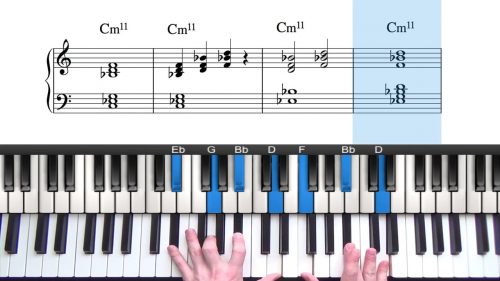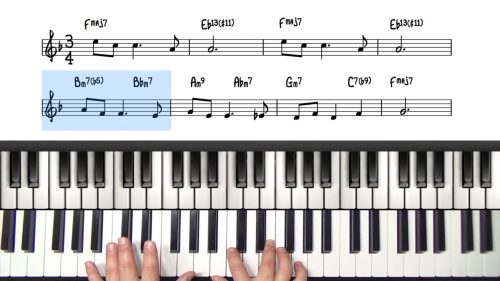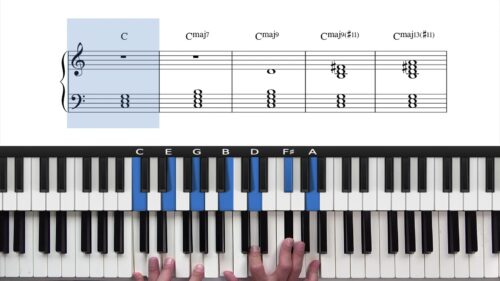How To Practice Upper Structures
Learning and memorising the upper structure triads is a daunting task. This lesson introduces the upper structure cheat sheet which we can use to speed up the memorisation process.
We discuss the best way to practise and familiarise yourself with upper structure triads. We start by talking about the different inversions and variations that you have available to you and we then use the cheat sheet to work out upper structure voicings for our favourite tunes.
Whilst it can be useful exercise to drill USTs through all 12 keys, it’s always important apply the theory in context of jazz standards.
Using The Cheat Sheet
Once you understand the basic construction of upper structures and have taken them around a few keys, start applying them to tunes.
That’s the whole point of the cheat sheet… when you come across a dominant chord on a lead sheet, look what is in the melody and then match it to a chord tone in the third column.
Do this for the entire song that you are working from. It isn’t a quick process but you will learn a lot from it and actually retain the information because you are applying it in context and taking the time to work it out manually.
You will find that many upper structure combinations don’t sound too good. In which case try a different one or move onto the next dominant chord.
Lesson Downloads
-
Lesson Notation With Notes File Type: pdf
Practice Tips
-
Work through your favourite jazz standards with the upper structure cheat sheet.
-
For eahh dominant chord, experiment with the 4 common upper structures and try to find interesting and creative ways to apply the voicings.
-
Remember that variety is key when choosing our chord voicings.
- Upper structure triads are dense, tense, and often quite jarring chords. They sound fantastic in places but make sure to use them appropriately.






Hiya Hayden, Extremely useful lesson, pretty complex and needs your attention, but gives you the key to using such complex US which you can then apply whenever necessary.
Takes a bit of practice but eventually sinks into the fingers
Thank you and regards
Bill k
HI Bill,
Glad you enjoyed the lesson and yes it is quite a complex subject.
The trick is to use the cheat sheet and manually work out your options over any dominant chord. Before long, those formulas will become second nature to you.
Have fun learning this stuff!
Cheers, Hayden
yes I can see it now the different sounds coming from the US. this is the a-ha moment for me when I see it being applied in misty and tenderly. will surely practice it a lot.. thank you Hayden for this fantastic lesson.
That’s great news Dan – the ‘ah-ha’ moments are brilliant.
Remember to print out the upper structure cheat sheet here: https://www.pianogroove.com/wp-content/uploads/2018/11/Upper_Structure_Cheat_Sheet.pdf
Stick this to the piano and whenever you come across a dominant chord in any jazz standard, stop and reference the paper to see if the the melody note is one of the scale degrees in the “US Chord Tones” column. If it is, then the next step is to find the inversion of the triad that works.
It’s a fun process and after a while it becomes second nature where you see the dominant chord, analyse the melody note, and your fingers will instantly gravitate towards certain voicings shapes.
Have fun practicing this stuff and let me know if you have any further questions.
Cheers, Hayden